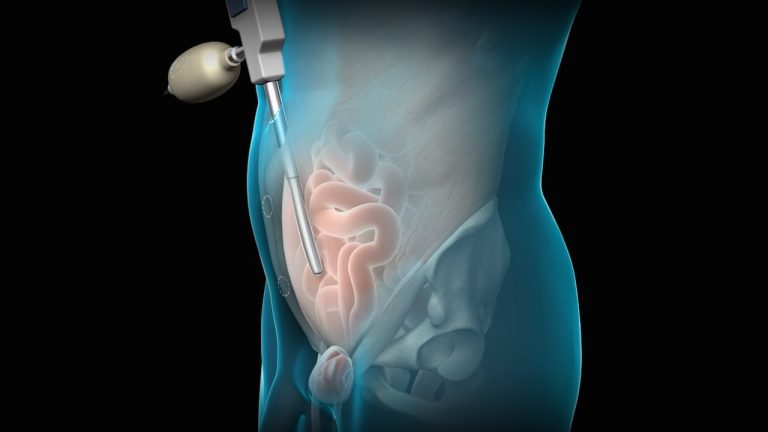
Table of Contents
Introduction
For many people struggling with obesity, traditional methods of weight loss such as diet and exercise can be insufficient. This is where non-surgical weight loss options like the gastric balloon come into play. This minimally invasive procedure has gained popularity due to its ability to help individuals lose weight effectively without undergoing major surgery. In this blog, we’ll dive into how the gastric balloon works, the benefits it offers, the potential risks, and why it could be the right option for you.
What is the Gastric Balloon?
The gastric balloon is a non-surgical weight loss tool designed to help patients achieve sustainable weight loss. The procedure involves placing a soft, flexible balloon into the stomach through the mouth using an endoscope. Once in place, the balloon is inflated to take up space in the stomach, significantly reducing the amount of food the stomach can hold. This helps patients feel full after eating smaller portions, resulting in reduced calorie intake.
The balloon is typically left in place for six months, during which time patients often experience significant weight loss. After six months, the balloon is removed in a simple outpatient procedure.
How Does the Gastric Balloon Work?
The Insertion Process
The insertion of the gastric balloon is a quick, minimally invasive procedure. Performed under mild sedation, a doctor uses an endoscope (a long, flexible tube with a camera) to guide the balloon into the stomach. Once in place, the balloon is inflated, occupying a large portion of the stomach. The entire procedure typically takes about 20 to 30 minutes, and most patients can return home the same day.
Feeling Full Faster
With the balloon occupying a large portion of the stomach, the individual feels full with much smaller portions of food. This leads to fewer calories consumed, creating a calorie deficit that results in weight loss. The balloon also affects hunger hormones, making patients feel less hungry, which contributes to their ability to eat less and adopt healthier eating habits.
Benefits of the Gastric Balloon
1. Non-Surgical Weight Loss
One of the most significant advantages of the gastric balloon is that it provides an option for weight loss without the need for surgery. Many people are hesitant to undergo major surgical procedures, and the gastric balloon offers a non-invasive alternative that can still produce meaningful results.
2. Quick Recovery Time
Since the procedure is minimally invasive, recovery time is much shorter compared to more invasive weight loss surgeries like gastric sleeve or gastric bypass. Most patients are able to return to work and regular activities within a few days, although they may need to follow specific dietary guidelines initially.
3. Short-Term Commitment
The gastric balloon is typically left in place for only six months, making it a temporary solution. This short-term commitment allows individuals to kick-start their weight loss journey without permanently altering their digestive system. After six months, the balloon is removed, and patients can continue their weight loss journey with the foundation they’ve built during the procedure.
4. Lower Risk of Complications
Because the gastric balloon doesn’t involve cutting or rerouting the stomach, it comes with fewer risks than traditional weight loss surgeries like gastric bypass or gastric sleeve. While there are some risks, such as nausea or the balloon moving out of place, they are relatively rare and manageable.
Who is a Candidate for the Gastric Balloon?
Eligibility Criteria
The gastric balloon is typically recommended for individuals who:
- Have a Body Mass Index (BMI) of 30 or higher, and have struggled with weight loss through diet and exercise.
- Are not candidates for more invasive weight loss surgeries, either due to medical reasons or personal preference.
- Are committed to making the lifestyle changes necessary to maintain weight loss after the balloon is removed.
It is important to consult with a healthcare provider to determine if the gastric balloon is the right option based on your medical history, weight loss goals, and willingness to follow post-procedure guidelines.
Risks and Considerations of the Gastric Balloon
Like any weight loss procedure, the gastric balloon does come with potential risks. These include:
- Nausea and Vomiting: Some patients experience discomfort, nausea, and vomiting shortly after the balloon is inserted. This is temporary and usually subsides within a few days.
- Balloon Deflation: In rare cases, the balloon may deflate or move out of place, which may require additional procedures to remove it.
- Digestive Issues: Some patients may experience bloating, acid reflux, or abdominal pain as their stomach adjusts to the balloon.
Most of these side effects are temporary and can be managed with proper aftercare and follow-up visits with your healthcare provider.
What to Expect After the Gastric Balloon Procedure
Dietary Changes
After the gastric balloon is inserted, patients are advised to follow a specific diet to help adjust to the smaller stomach size. The first few days typically involve consuming liquids and soft foods, gradually progressing to solid foods as the stomach adjusts. It’s essential to follow the dietary recommendations provided by your healthcare provider to ensure weight loss success and prevent complications.
Exercise and Lifestyle Changes
While the gastric balloon can help patients feel fuller and reduce their food intake, it is still essential to make long-term lifestyle changes, including incorporating regular physical activity and maintaining a balanced diet. These changes will ensure lasting weight loss results after the balloon is removed.
Conclusion
The gastric balloon is an excellent option for individuals looking for a non-surgical, minimally invasive weight loss solution. While it is not a permanent fix, it provides a powerful tool to help patients lose weight, adopt healthier habits, and improve overall health. If you’re considering the gastric balloon, it’s essential to consult with a healthcare professional to discuss your options and ensure you are a good candidate for the procedure.






